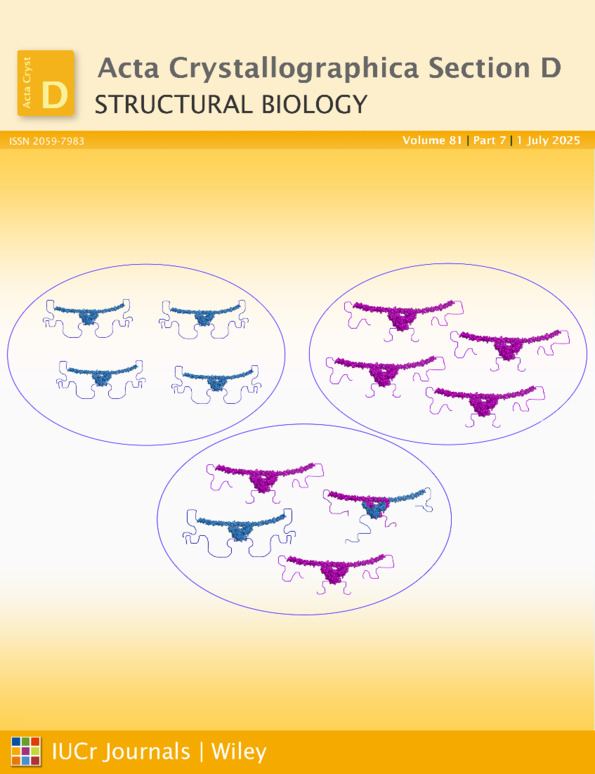X-ray structure of a monoclinic form of hen egg-white lysozyme crystallized at 313 K. Comparison of two independent molecules
Abstract
A monoclinic crystal of hen egg lysozyme (HEL, E.C. 3.2.1.17) was obtained at 313 K from a 10%(w/v) NaCl solution at pH 7.6 containing 5%(v/v) 1-propanol. Cell dimensions were a = 27.23, b = 63.66, c = 59.12 A and β = 92.9°, and the space group was P21. The unit cell contains four molecules (Vm = 1.79 Å3 Da−1). The structure was solved by the isomorphous replacement method with anomalous scattering followed by phase improvement by the solvent-flattening method. The refinement of the structure was carried out by the simulated-annealing method. The conventional R value was 0.187 for 18 260 reflections [|Fo| > 3σ(F)] in the resolution range 10–1.72 Å. The r.m.s. deviations from the ideal bond distances and angles were 0.015 Å and 3.0°, respectively. The two molecules in the asymmetric unit are related by a translation of half a lattice unit along the a and c axes. The r.m.s. difference of equivalent Cα atoms between the two molecules was 0.64 Å and the largest difference was 3.57 Å for Gly71. A significant structural change was observed in the regions of residues 45–50, 65–73 and 100–104. The residues 45–50, which connect two β-strands, are shifted parallel to the β-sheet plane between the two molecules. The residues 100–104 belong to the substrate-binding site (subsite A) and the high flexibility of this region may be responsible for the binding of the substrate and the release of reaction products.




